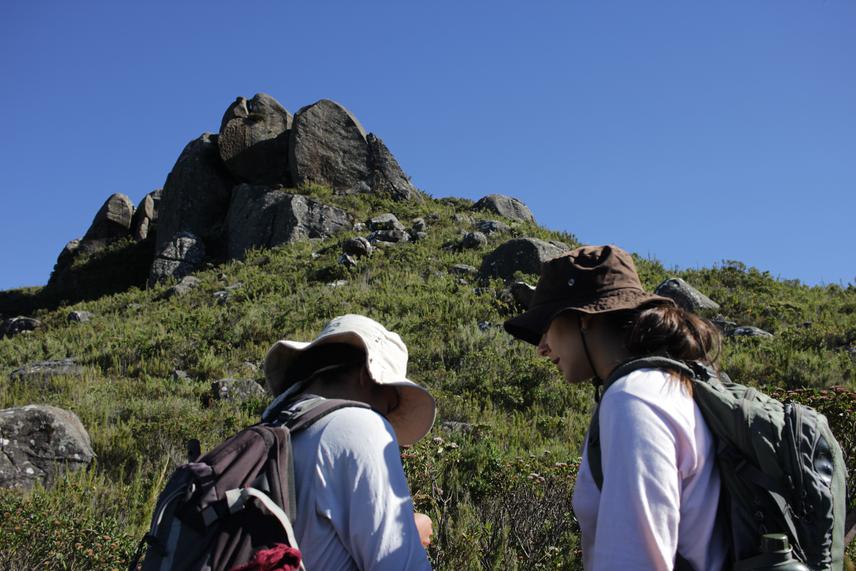Social media video featuring the project.
Mayara Vescovi Assis
Our main goal in this project is identify the complex mechanisms behind Campos de Altitude plants stress resistance and responsiveness to environmental changes. The identification of theses mechanisms is extremely important to predict the response of Campos de Altitude plants to future climatic changes, one of the greatest threats of this kind of ecosystem. To access this goal, we proposed an ecophisiological monitoring approach at plants population level. In Brazil we still have very few projects monitoring species’ responses to climatic changes based on ecophisiological knowledge of tropical plants. Thus, our project will be able to generate knowledge to positively influence monitoring programs, helping to mitigate the negative effects of climatic changes on plant populations of high-altitude grasslands.

Brazilian High-Altitude grasslands or Campos de Altitude is a relictual type of vegetation that occurs on south and southeast mountaintop areas of Brazil. This kind of vegetation is associated with high altitudes (1700 to 2800 m.a.s.l.) and is currently threatened by human activity, specially related to climate changes. Future climatic changes will impose new and more severe environmental conditions to Campos de Altitude plants. However, we do not know if Campos de Altitude species will be able to cope with this new scenario.
Currently, it has been proposed that intraspecific variability plays an important role on plants ability to respond to environmental changes, as well on stress resistance. For instance, a high degree of correlation among plants traits can restrict species or populations phenotypic plasticity (i.e. ability of a genotype to change its phenotype when subjected to different environmental conditions). Our project will access the relationship among Campos de Altitude plants intraspecific variability, stress resistance and responsiveness to environmental changes.
To access Campos de Altitude plants responsiveness to climatic changes, we will monitor the ecophisiological responses to natural environmental variation of two species at Caparaó National Park: Croton erythroxyloides e Baccharis platypoda. Using the natural altitudinal variation and climatic seasonality we will be able to obtain a range of temperature and precipitation variation. Ten populations (per each species and over the entire altitudinal variation) will be select to monitor performance parameters as growth and fluorescence measurements of chlorophyll a in the rainy and drought season. With the purpose of evaluate if there is a relation among performance parameters and intraspecific variability will also measure trait variation /covariation and phenotypic plasticity at population level. Thus, we will be capable to indentify which are the most endangered populations of the two focal species. We will also be able to identify if there is a relationship among lower responsiveness and altitude. In the latter case, we will have a greater capacity for generalization to another Campos de Altitude plants.